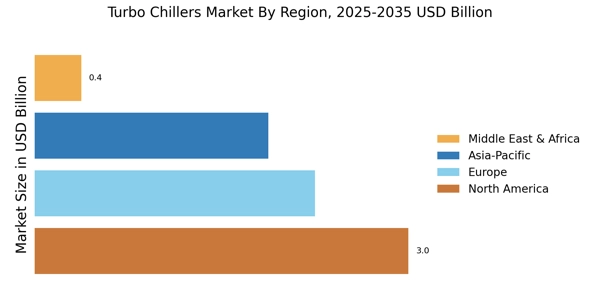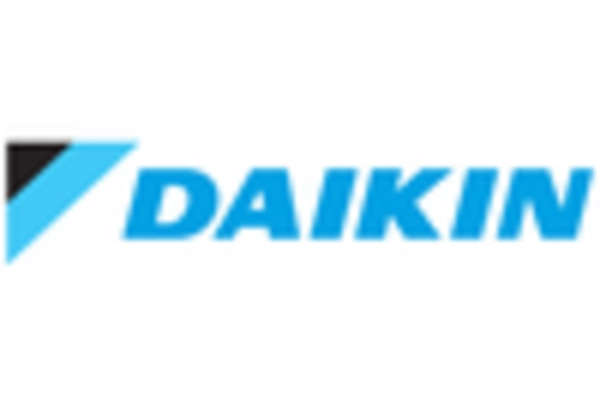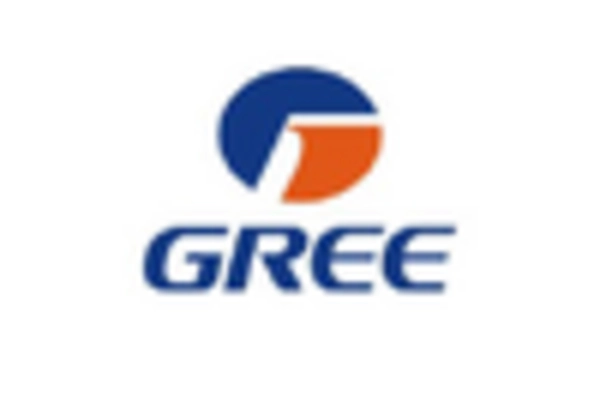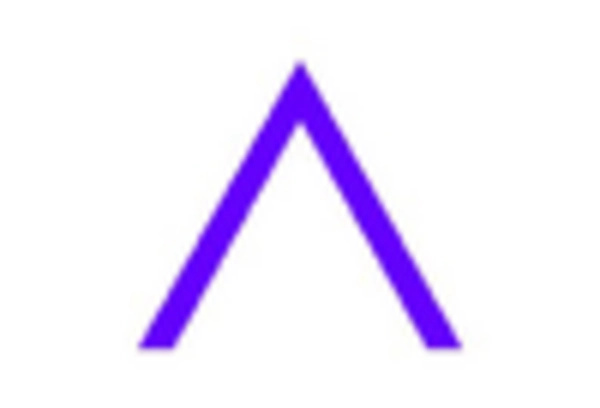Technological Innovations
Technological advancements play a crucial role in shaping the Turbo Chillers Market. Innovations such as variable speed drives, advanced control systems, and improved heat exchangers are enhancing the performance and reliability of turbo chillers. These technologies not only improve energy efficiency but also extend the operational lifespan of the equipment. The integration of IoT and smart technologies allows for real-time monitoring and predictive maintenance, which can significantly reduce downtime and maintenance costs. As industries increasingly adopt these advanced technologies, the demand for turbo chillers is expected to rise, reflecting a broader trend towards automation and smart solutions in cooling systems.
Growth in Industrial Applications
The Turbo Chillers Market is witnessing substantial growth due to the expanding industrial sector. Industries such as pharmaceuticals, food and beverage, and chemical manufacturing require reliable cooling solutions to maintain product quality and operational efficiency. Turbo chillers are particularly suited for these applications due to their ability to provide precise temperature control and high cooling capacities. Market data indicates that the industrial segment accounts for a significant share of the overall turbo chillers market, driven by the increasing need for process cooling in various manufacturing operations. This trend is likely to continue as industries seek to optimize their processes and enhance productivity.
Rising Demand for Energy Efficiency
The Turbo Chillers Market is experiencing a notable increase in demand for energy-efficient cooling solutions. As industries strive to reduce operational costs and minimize environmental impact, turbo chillers, known for their high efficiency, are becoming a preferred choice. According to recent data, energy-efficient chillers can reduce energy consumption by up to 30% compared to traditional systems. This shift towards energy efficiency is driven by regulatory frameworks that encourage sustainable practices, further propelling the adoption of turbo chillers. The growing awareness of climate change and the need for sustainable energy solutions are likely to enhance the market's growth trajectory, as businesses seek to align with global sustainability goals.
Regulatory Support for Sustainable Practices
Regulatory frameworks promoting sustainability are significantly influencing the Turbo Chillers Market. Governments worldwide are implementing stringent regulations aimed at reducing greenhouse gas emissions and promoting energy efficiency. These regulations often incentivize the adoption of advanced cooling technologies, including turbo chillers, which are recognized for their lower environmental impact. The support from regulatory bodies not only encourages businesses to invest in energy-efficient solutions but also fosters innovation within the industry. As compliance with these regulations becomes increasingly critical, the demand for turbo chillers is expected to grow, aligning with global efforts to combat climate change.
Increasing Urbanization and Infrastructure Development
The Turbo Chillers Market is benefiting from the rapid urbanization and infrastructure development occurring in various regions. As cities expand and new commercial and residential buildings are constructed, the demand for efficient cooling systems rises. Turbo chillers are particularly advantageous in urban settings due to their compact design and high efficiency, making them suitable for space-constrained environments. Market analysis suggests that the construction sector is a key driver of growth for the turbo chillers market, as new developments require reliable and efficient cooling solutions. This trend is likely to persist as urbanization continues to accelerate, creating further opportunities for the turbo chillers market.


















Leave a Comment